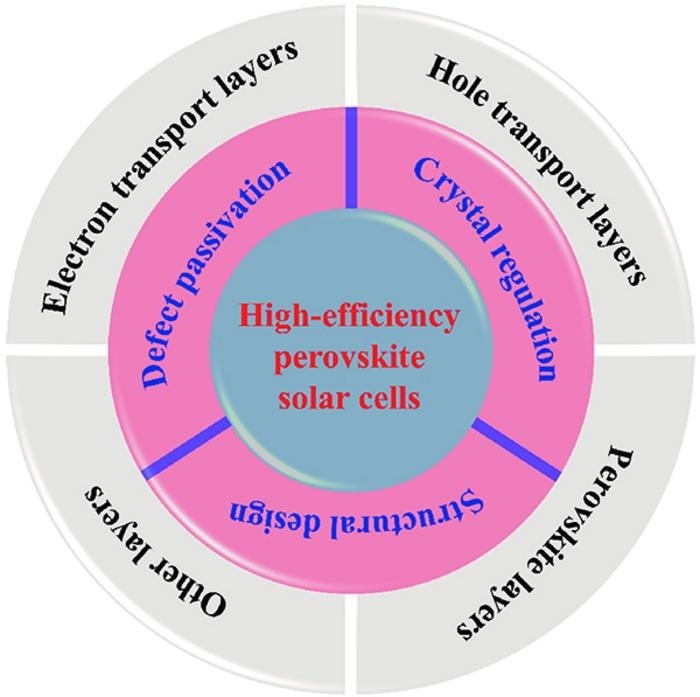Commercial solar panels available today can convert between 15% and 20% of the sunlight they receive into electrical energy, but researchers at Soochow University believe they might be far more effective. According to them, the next generation of solar cells has already shown an efficiency of 26.1%. More focused research directions are required to raise this efficiency level and beyond it.
 Researchers at Soochow University reviewed the current developments in making perovskite solar cells more efficient and offered directions to guide future research. They can achieve slightly more than 25% efficiency, but the research said they could achieve more if current limitations are addressed appropriately. Image Credit: Fengren Cao, Soochow University
Researchers at Soochow University reviewed the current developments in making perovskite solar cells more efficient and offered directions to guide future research. They can achieve slightly more than 25% efficiency, but the research said they could achieve more if current limitations are addressed appropriately. Image Credit: Fengren Cao, Soochow University
On February 4, 2024, they published their assessment of the current status of research on highly efficient perovskite solar cells, along with suggestions for further work in the Energy Materials and Devices field.
Metal halide perovskite solar cells are a new type of high-performance solar cell. They exhibit excellent photoelectric properties and have the potential for high efficiency and low cost, making them a promising candidate for future solar energy applications.
Fengren Cao, Study First Author and Researcher, School of Physical Science and Technology, Soochow University
These solar cells use metal halide perovskite, an organic substance that resembles calcium titanium oxide and functions as a light-absorbing semiconductor to absorb incident sunlight and transform it into energy.
Cao added, “Perovskite solar cells offer high efficiency, exceeding 26% in laboratory conditions; low cost, using relatively inexpensive materials and simple manufacturing processes; flexibility, as they can be made on flexible substrates — such as plastic or metal foils — enabling the development of lightweight, flexible photovoltaic devices; and they can be scaled up to larger sizes. They have extraordinary potential as the next generation of photovoltaic technology.”
However, according to Cao, only a few research groups have produced perovskite solar cells with 25% or higher efficiency.
“Over the past years, many strategies have been adopted to improve the efficiency of perovskite solar cells. But achieving more than 25% efficiency is not yet common. As such, in this paper, we summarize recent developments in high-efficiency perovskite solar cells and highlight their effective strategies in crystal regulation, interface passivation and structural design of component layers,” Cao added.
According to Cao, these tactics might successfully address the primary reasons for low efficiency, which are faults caused by the preparation process and an inappropriate band structure. The material’s electron energy levels are referred to as the band structure. If it is too low, it will not be able to convert sunlight into energy effectively; if it is too high, it will experience the same problem.
Cao also mentioned the possibility of combining multiple types of solar cells to create “tandem solar cells,” which can surpass the efficiency limitations of a single type of solar cell. Furthermore, according to Cao, larger component manufacturing techniques need to be tuned to reach the same efficiencies as small-area fabrication techniques that need less than a tenth of a square centimeter.
Cao further added, “We believe that perovskite solar cells are one class of the most promising solar cells, and these efforts will ensure they can be commercialized and industrialized in the future. The future of perovskite solar cells is incredibly exciting, and the potential for further advancements is vast."
Additional collaborators include Liang Li and Liukang Bian from Soochow University’s School of Physical Science and Technology, as well as the Center for Energy Conversion Materials & Physics and the Jiangsu Key Laboratory of Thin Films. Cao is also connected to the Jiangsu Key Laboratory of Advanced Negative Carbon Technologies at Soochow University.
The study was sponsored by the Priority Academic Program Development of Jiangsu Higher Education Institutions and the National Natural Science Foundation of China.
Journal Reference:
Cao, F., et. al. (2024) Perovskite solar cells with high-efficiency exceeding 25%: a review. Energy Materials and Devices. doi:10.26599/EMD.2024.9370018.